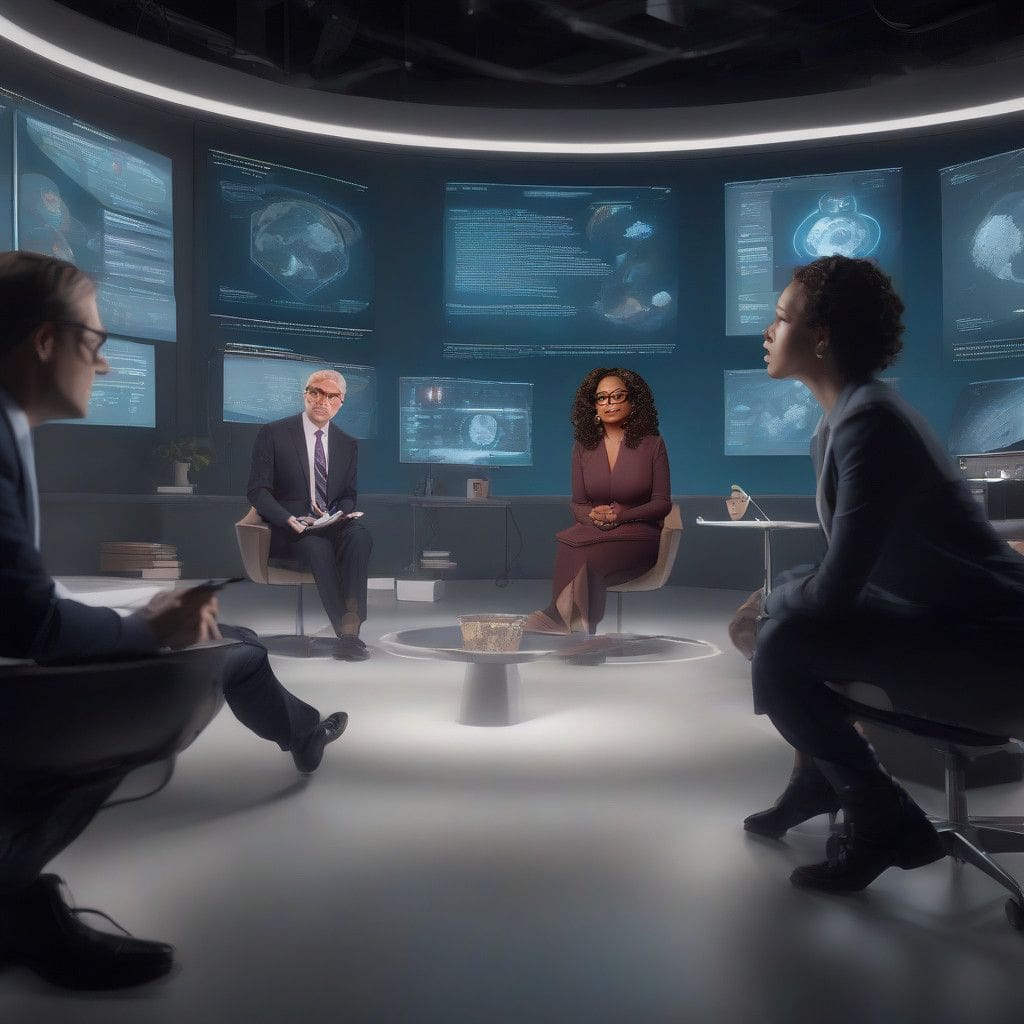Oprah Winfrey’s recent special, “AI and the Future of Us,” has captivated audiences by featuring prominent figures such as OpenAI CEO Sam Altman and tech influencer Marques Brownlee. The program highlighted a crucial conversation about artificial intelligence (AI), its rapid advancement, and the concomitant ethical concerns. In a world where technology is advancing at an unprecedented pace, the program laid bare the dichotomy between the potential benefits of AI and the pressing dangers it poses.
Altman, representing one of the leading companies in AI development, emphasized the need for stringent safety regulations. His comments echoed a sentiment that resonates within the tech community: as AI systems become more sophisticated, their safety must be rigorously tested. He remarked on the capabilities of AI to learn and adapt, fostering excitement about its potential applications in various fields. However, he simultaneously acknowledged the essential need for government intervention in establishing safety measures. This call for regulation is particularly poignant in light of OpenAI’s opposition to California’s AI safety bill, which many experts believe would introduce vital safeguards for the technology.
The discussion also went beyond technical concerns. Altman raised alarms about deepfakes—fraudulent video or audio content generated by AI technology—which pose ethical quandaries relating to misinformation. As AI becomes adept at creating hyper-realistic content, the risk of its exploitation for deceitful purposes only increases. Such misuse stresses the importance of a constitutional framework governing AI use to ensure accountability and prevent harm to society.
Joining the dialogue, FBI Director Christopher Wray offered a sobering perspective on the threats that AI brings to cybersecurity. He articulated concerns over rising cybercrimes facilitated by AI, such as sextortion and disinformation campaigns. As technology empowers perpetrators of these crimes, Wray called for increased vigilance among the public. With AI-generated content proliferating online, the potential for misinformation to sway public opinion or interfere with democratic processes is alarming.
While the conversation highlighted significant threats, it was not devoid of optimism. Bill Gates, an icon of technological advancement, expressed his belief in AI’s transformative potential, especially in sectors like education and healthcare. He highlighted how AI could enhance medical transcription services and improve classroom learning experiences. However, Gates acknowledged that biases inherent in AI algorithms should not be overlooked, stressing that the technology must be carefully managed to avoid unintended consequences.
The contrasting views shared by Gates and Wray illuminated the complexities of navigating AI’s evolution. While there are vast opportunities for innovation, unregulated development could lead to significant distrust in the technology. The primary concern is achieving a balance between harnessing AI for good and mitigating its risks.
In drawing his closing remarks, Winfrey summarized the essence of the discussion—the need for humanity to adapt in response to the rapid developments in AI. She highlighted that collective awareness and action are crucial if society is to reap the benefits of AI while safeguarding against its perils.
This special not only serves as a call to action for regulators and developers but also as a reminder to the public. It underscores the necessity for a well-informed populace that can engage critically with the implications of AI advancements. The conversation initiated by Oprah’s special could very well be a stepping stone towards developing robust frameworks that ensure AI technology is used ethically and safely.
As we look to the future, it is imperative to recognize that the trajectory of AI is not predetermined. With proactive governance and public engagement, the potential for AI to serve as a transformative tool in society can be actualized, while minimizing its inherent risks.












